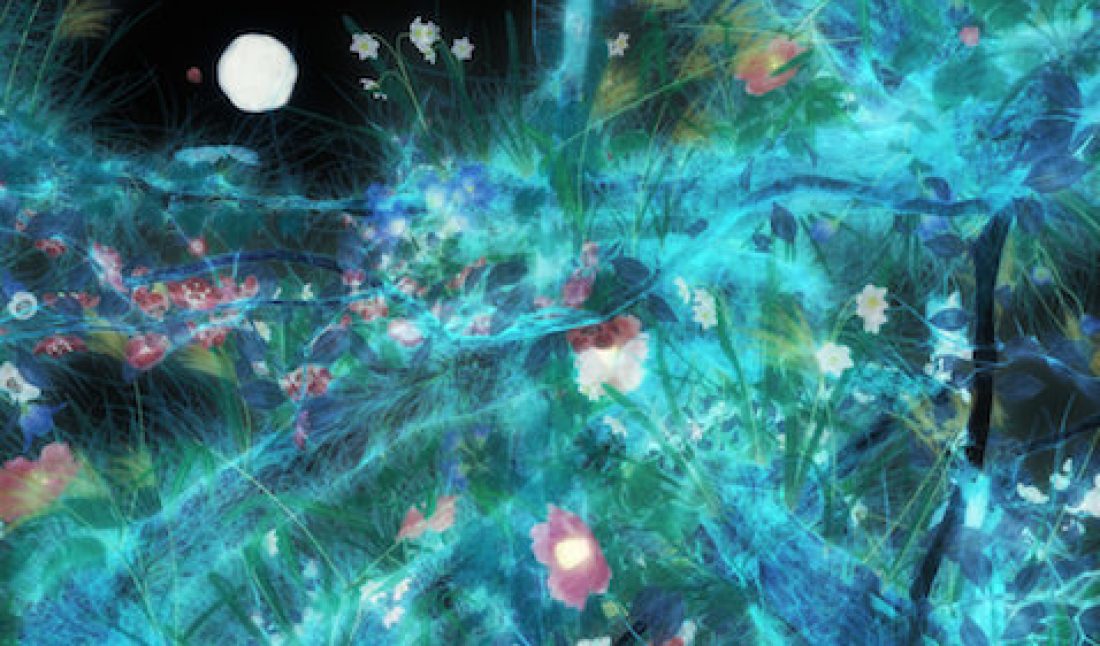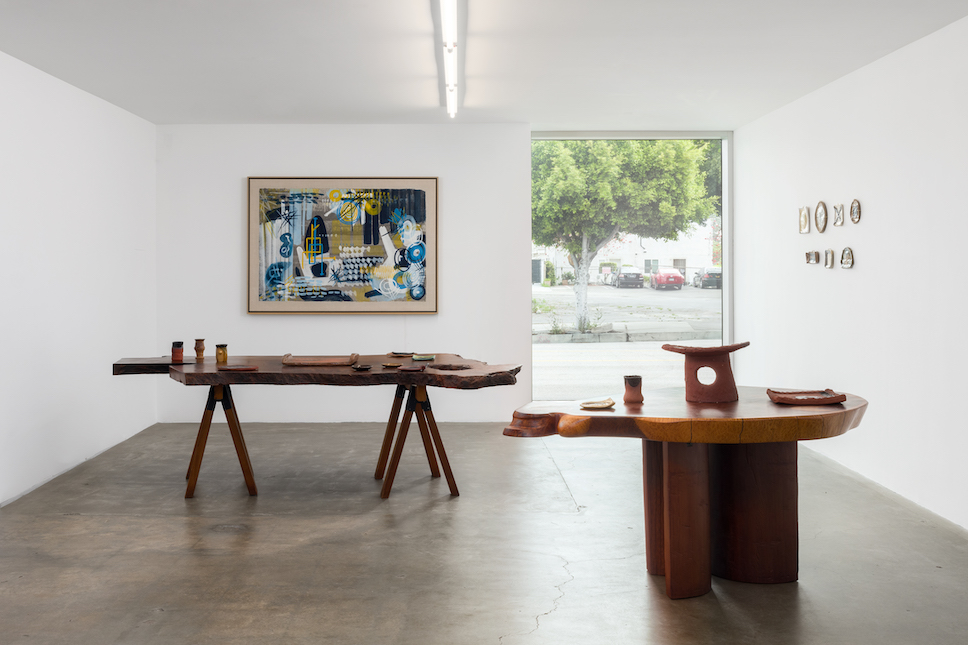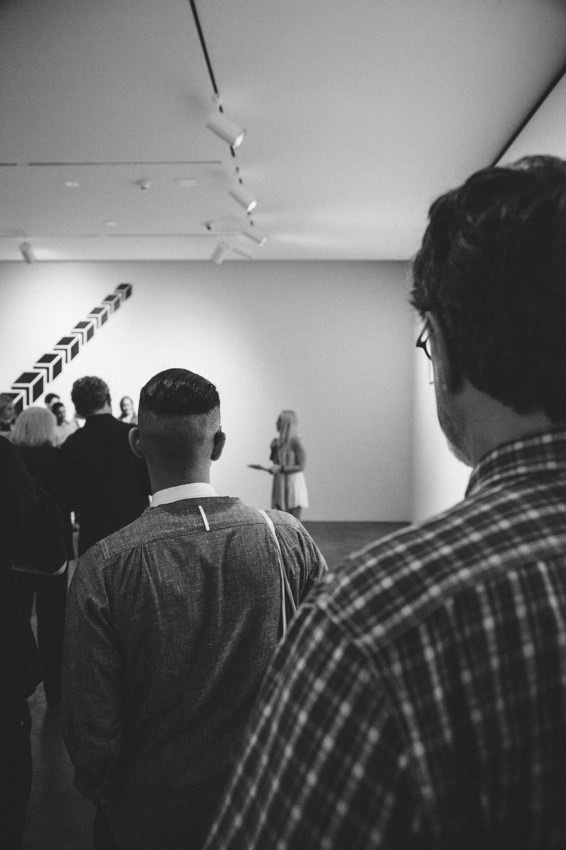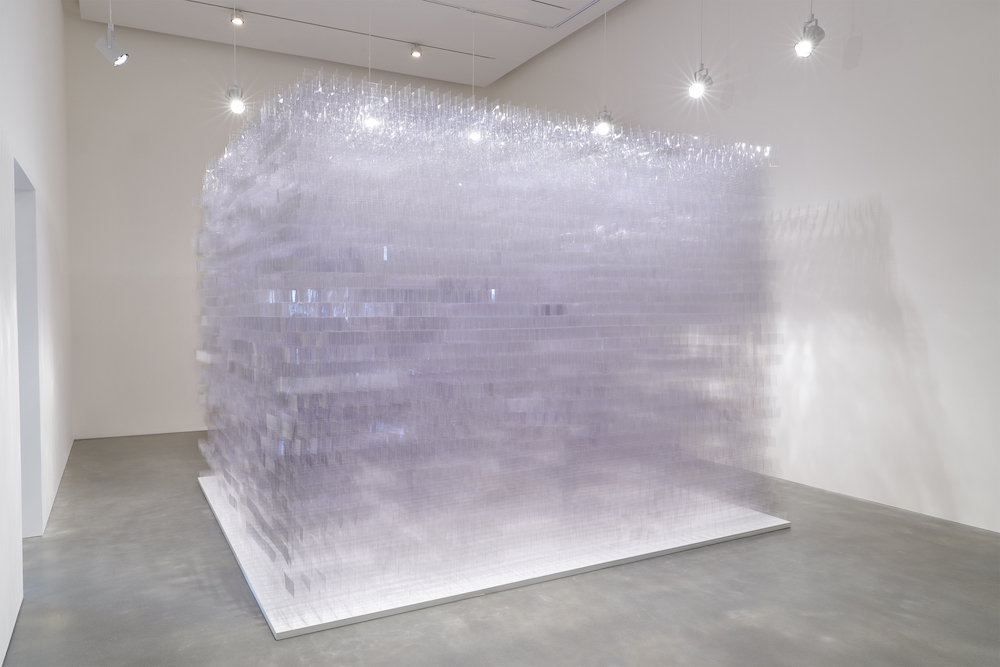New media arts have long yielded proprietors of technological ingenuity, challenging convention and establishing new ways through which viewers can interpret and interact with contemporary art. Such is the case in a new exhibition of works by Japanese collective teamLab, who made their North American debut last month with “Ultra Subjective Space“ at Pace Gallery in New York. The group of ultra-technologists, by which they refer to themselves, comprises more than 300 technological specialists in the fields of programming, engineering, mathematics, architecture, CG animation, web design, graphic design, art, and fashion, among others.
Two of Pace’s Chelsea exhibition spaces are commanded by the collective’s seven works displayed on ultra high definition Sony screens, some of which are conceivably larger than mid-sized cars. Throughout, the installations reject the traditionally employed Western art perspective of a single vanishing point in favor of a single-plane or “superflat” depth typically depicted in Japanese artwork like that of anime. A work titled Crows are chased and the chasing crows are destined to be chased as well, Division in Perspective – Light in Dark commands an entire showroom to itself, wrapping the viewer with seven staggered screens that impart an immersive spatial perception experience.
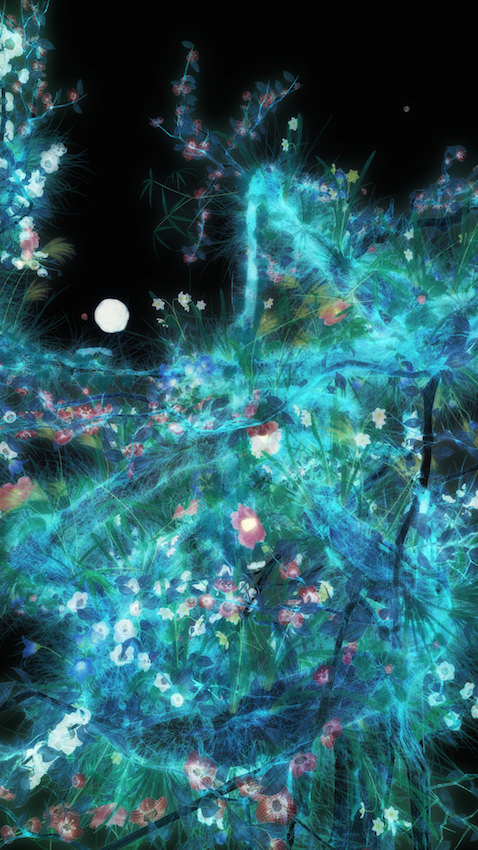 © 2014 Pace Gallery
© 2014 Pace Gallery
A digital catalog of the show can be scene here (though it’s worth making the trek out to Chelsea to experience the installation in 4K resolution). The show will be up through August 15 at Pace’s 508 & 510 West 25th Street locations. Founder Toshiyuki Inoko was joined by fellow teamLab member and translator Ikkan Sanada to speak with Whitewall about the installation.
WHITEWALL: Two works, Ever Blossoming Life – Gold and Ever Blossoming Life – Dark, share similar visual imagery. What’s the story of their duality?
TOSHIYUKI INOKO: It’s all pre-recorded images being played back. Flowers come out from different parts of the subject, wither, and die down. And it repeats. This object, which looks like a planet, is also changing its shape, and as you can see, it’s rotating slowly.
WW: But it’s not on a loop.
TI: It’s not a loop.
WW: How is the imagery created?
TI: He creates application software that writes this kind of imagery by itself in real time, rendered by this program, which is continuously drawing new imagery. These two are a pair. The shapes of the planets and flowers are different, but it is the same program.
WW: It’s often mentioned that teamLab’s influence is rooted in ancient Japanese art, particularly the 17th-century, which is alluded to not only these works but also some of the others in this show.
TI: The imagery is rooted in ancient Japanese styles of typical Japanese painting when certain artists painted the works on goldleaf. You can see each goldleaf. It’s like a typical Japanese screen painting. Even though the dark one isn’t shiny like this one, it still has a goldleaf background. Because it’s dark, the gold doesn’t come up, but the flowers glow in the dark.
WW: Each of these works utilize a spatial perspective that is somewhat foreign to an American audience. What do you hope to challenge in your Western viewers?
TI: I want to present an alternative to traditional Western viewers who are accustomed to seeing the 2-dimensional world expressed in a single vanishing point perspective, which was established during the Western Renaissance period. teamLab wants to present an alternative that there is a different way of [translating] 3-D spaces into 2-dimensional space, a flat space. Here, unlike the Western perspective with a single vanishing point, there is no perspective, yet there is a real world inside. It is just a different way of expressing the 3-dimensional world. Because there is no single vanishing point, the figures expressed here in the front are the same size as the figures expressed farther back, which is not a logical theory expressed in a Western perspective. By presenting this type of a new or alternative theory of space recognition, of space treatment into 2-dimensional artwork, teamLab also hopes to convey the message to the Western world that through the use of this type of technology, we can present a different way of understanding the world and communicating with each other, not only visually but interfacing with the world.
WW: What’s the story behind Cold Life? It’s almost elegiac when compared with the other works in this show.
TI: This is created in a virtual computer. You see a 3-dimensional image on a flat screen and the same story with the other work with 12 panels, everything was created inside the computer, first creating a virtual 3-D imagery and after the graphics are created they normally use this mesh-like structure to express the volumes and the 3-D imagery. Instead of finishing the surfaces and [painting them] like the other work, this one they left untouched, meaning they are leaving the backbone structures without applying any kind of surface.
WW: And yet we’re watching life grow out of it.
TI: This tree-like structure is first drawn with brush strokes [for which the word] means “life” in Japanese or Chinese character. From those brushstrokes, new branches come out of this “life” character and attracts bird and animals and now the flower is blooming. It’s like life is creating more life by itself. And the other two works you saw about blossoming life are shown on a monitor provided by Sony in a 4k resolution, which is often also called ultra high resolution. It’s four times higher than the resolution of an HD television screen. That’s why you see everything.
WW: What about the exhibitions largest installation, Crows are chased and the chasing crows are destined to be chased as well, Division in Perspective – Light in Dark?
TI: We are right in the middle toward the end of this sequence. You can see white birds — these birds are called Yatagarasu in Japanese — the bird has three legs instead of two. It’s a mythological bird appearing in Japanese old stories, which symbolizes power and heaven. First, a single bird flies out, and then the remaining birds start chasing that bird. But in the process, the chasing birds also become the chased. So, the title is “Crows are chased and the chasing crows are destined to be chased as well.” As crows fly out, are chasing, and are being chased, they often crash and die down. When they die, they become flowers. So at the end you see many flowers.
WW: How does this particular piece, being displayed on seven unique panels at once, demonstrate that Eastern perspective?
TI: Normally when you videotape scenery or movement and then play it back, if you cut only part of that imagery and put it somewhere else, or mix it inside of the other part of the imagery, it doesn’t really make sense. However, in Japanese space of ultra projected where there’s no single vanishing point, we can take one part of the image and place it somewhere else. It stands by itself. It doesn’t really disturb the rest of the imagery. He wanted to experiment with this work by placing additional imagery on the side to prove that this is possible in Japanese space perception. It gives you the viewer a more exciting experience and a better understanding of the space.






